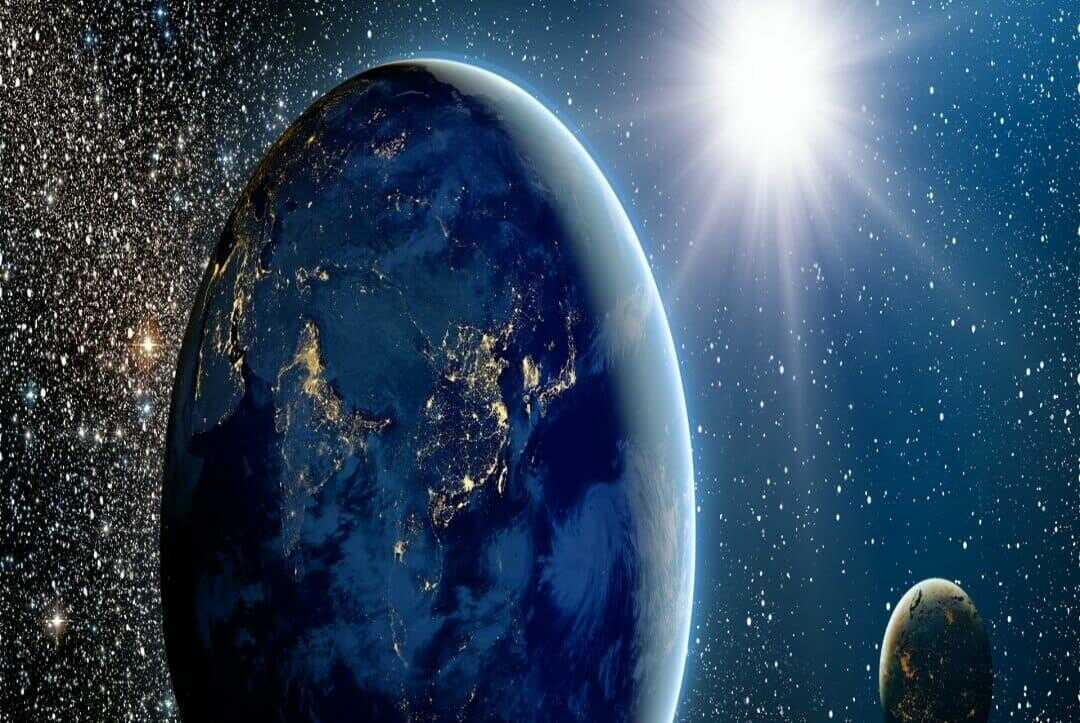For as long as humans have been alive on Earth, their biggest source of fascination has been the night sky. For thousands of years, humans have looked up towards the sky, made wishes to stars and have even worshipped several celestial bodies like the Sun and the Moon. However, it took a long time for the night sky to become the vast cosmos we now know.
It has only been more than a century that we humans have been able to reach the outer space and explore it first handedly. It has been an exceptional journey since then. Scientists have not stopped since. While there is a lot more we need to discover, there is an extraordinary amount of facts and figures, new and old, that we humans are already aware of.
The ten facts listed below make up for some of the most revolutionary discoveries about the outer space, which coincidently are some of the most interesting facts about the universe.
Existence of the black holes
Astronomers have always been intrigued by black holes. For decades, they could not understand the concept of a region in the outer space where the gravitational pull is so powerful that nothing can get out including light. Even Einstein could not believe in the existence of a black hole, though he predicted them in his theory of general relativity. Finally, in 1971, the first-ever black hole was detected. In the constellation of Cygnus, strong emissions of x-rays were noticed. Confirming that black holes do exist in outer space made the cosmos all the more interesting.
Dinosaur mystery solved
Until 1980, one of the biggest human mystery was the extinction of the dinosaurs. No one could understand how an entire species disappeared in a blink. Nobel prize winner Luis Alvarez was the first one to implicate an asteroid impact on Earth with the extinction of dinosaurs. It wasn’t until the 90’s that the Chicxulub crater was widely accepted as the cosmic event that ended the descent of the most famous extinct species on Earth, roughly 66 million years ago.
First exoplanet found
The term ‘planets’ is always associated with the planets in the solar system that orbit the Sun. The reality is that there are thousands of other planets that orbit different stars in our galaxy only. Who knows about the entire universe? These planets, known as the exoplanets were first discovered in 1992 in the constellation of Virgo. Scientists found two exoplanets orbiting a pulsar star. Before then, extrasolar planets were only a figment of our imagination.
The universe is expanding
The observable universe only constitutes off about 5% of the entire cosmos, the rest is still a huge mystery. However, one thing we do know now is that the universe is expanding as we speak at a very accelerated speed, which stunned the entire scientific community. The latter information only came to light in the year 1998. This gave birth to the term “dark energy”, which is said to constitute about 73% of the universe. It is a peculiar form of energy that exerts a huge amount of force on all the celestial bodies, which is driving them apart at a very fast rate.
Water in the space
One of the biggest missions of human space exploration has always been finding if life exists outside the confines of our own atmosphere. Human life’s most basic need is water and finally finding it in the outer space was NASA’s one of the top achievements until 1995. The Galileo mission confirmed that there is a massive ocean of water, which is concealed under the ice crust of Europa (a Jupiter Moon). The ocean is probably 100 miles deep and could contain up to 2 times the water on Earth.
Observing the collision of 2 Black holes for the first time
As we said in the beginning, black holes are one of the most intriguing astronomical bodies for astronomers. Until 2016, the collision of 2 black holes was just a hypothesis. It was the researchers at LIGO that detected the first gravity waves in space that are caused by the increasing speed of the massive astronomical object. These waves allow the scientists to observe and understand the events that they are unable to observe using traditional instruments like telescopes. Laser Interferometer Gravitational-wave Observatory noticed the disturbance caused when the black holes collided and merged with each other.
The first-ever photo of the black hole
2019 was a big year for human space exploration. While the existence of black holes was no longer under suspicion, no one knew what a black hole looked like. In 2019, using the Event Horizon Telescope, the first ever image of a black hole was captured. The captured object was a supermassive black hole that lies 53 million light years away in the Messier 87 galaxy. It is mind boggling to think that something like an endless pit of darkness is the ‘most elusive outer space object’.
China’s Chang’e 4 mission
While the Moon orbits the Earth, because of synchronous rotation, we only see one side of the natural satellite. Interestingly, no one has been on that side of the Moon ever, until January 3, 2019. China’s Chang’e 4 Moon lander is the first manmade object that has ever touched down the other side of the Moon.
Capturing the brightest gamma ray burst for the first time
Gamma ray bursts are the most energetic and brightest electromagnetic happenings that occurs in the universe. Usually they are explosions observed in galaxies, far away from us. While conventional telescopes have been able to capture low energy rays from the initial explosions, they had never been able to observe the ‘ultra-high energy light’ until the gamma ray burst, officially named GRB 190114C.
Launch of Crew Dragon by SpaceX
On 2nd March 2019, the first ever commercial space vehicle was launched by SpaceX. Crew Dragon is the first private spaceship that is designed to take humans into space. The space capsule is designed for seven people, mostly for NASA astronauts. This was a demo launch that carried 400 pounds of cargo into outer space. Following year, in May 2020, the Dragon 2 was launched. It was a crewed mission that was completed in August 2020.






